Philippines' 1st Property Portal
residential properties for rent
19033 properties found Updated Nov 21, 2025
Updated Nov 21, 2025
- 2
- 1
- 2
- One McKinley Place, Taguig
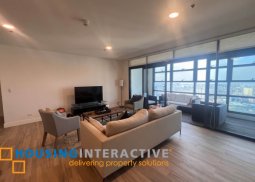 Updated Nov 21, 2025
Updated Nov 21, 2025
- 3
- 2
- 3
- Garden Towers, Makati
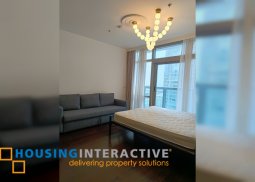 Updated Nov 21, 2025
Updated Nov 21, 2025
- 3
- 2
- 3
- East Gallery Place, Taguig
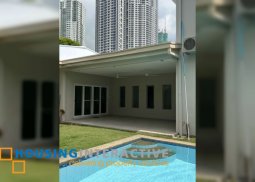 Updated Nov 21, 2025
Updated Nov 21, 2025
- 4
- 4
- San Lorenzo Village, Makati
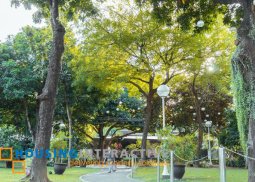 Updated Nov 21, 2025
Updated Nov 21, 2025
- 4
- 2
- 4
- Dasmariñas Village, Makati
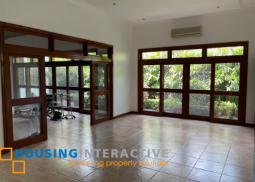 Updated Nov 21, 2025
Updated Nov 21, 2025
- 4
- 4
- Dasmariñas Village, Makati
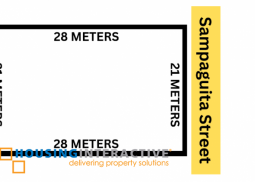 Updated Nov 21, 2025
Updated Nov 21, 2025
- Makati
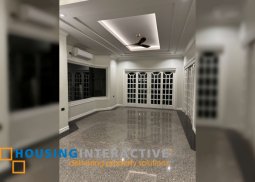 Updated Nov 21, 2025
Updated Nov 21, 2025
- 3
- 3
- San Lorenzo Village, Makati
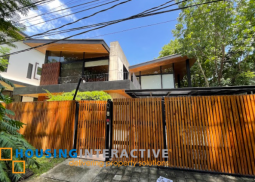 Updated Nov 21, 2025
Updated Nov 21, 2025
- 5
- 5
- Muntinlupa
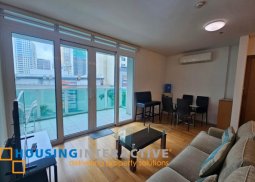 Updated Nov 21, 2025
Updated Nov 21, 2025
- 1
- 1
- 1
- Park Terraces, Makati
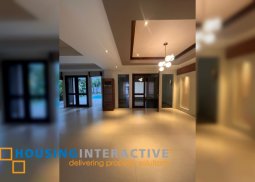 Updated Nov 21, 2025
Updated Nov 21, 2025
- 3
- 3
- Muntinlupa
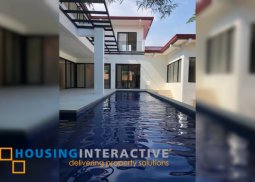 Updated Nov 21, 2025
Updated Nov 21, 2025
- 3
- 3
- Muntinlupa
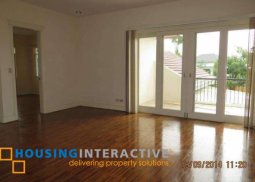 Updated Nov 21, 2025
Updated Nov 21, 2025
- 4
- 2
- 4
- Muntinlupa
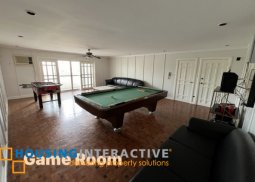 Updated Nov 21, 2025
Updated Nov 21, 2025
- 6
- 5
- 6
- Muntinlupa
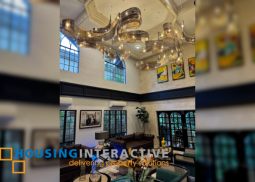 Updated Nov 21, 2025
Updated Nov 21, 2025
- 4
- 4
- 4
- Muntinlupa
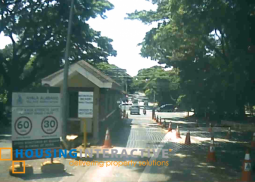 Updated Nov 21, 2025
Updated Nov 21, 2025
- 4
- 4
- Muntinlupa
Residential Properties for Rent in the Philippines
Exploring Residential Rental Options in the Philippines
The Philippines' housing market experienced a boom from 2010 to 2018, with significant price increases, particularly in the Central Business Districts. However, this was followed by a sharp slowdown in 2019 due to economic factors and the US-China trade war. The Covid-19 pandemic further exacerbated the situation, leading to a significant decline in house prices in 2020. While the market began to recover in 2022 and 2023, price increases have largely been offset by inflation, resulting in minimal real growth in recent quarters.
The Philippine rental market is expected to evolve in the coming years. While challenges such as economic uncertainty and rising interest rates persist, factors like continued urbanization, changing demographics, and the growing demand for flexible living arrangements will continue to shape the market's trajectory.
Renting offers several advantages over homeownership. Firstly, it requires a lower initial investment, eliminating the need for a large down payment and closing costs. Secondly, renting provides greater flexibility, allowing individuals to relocate easily without the long-term commitment of homeownership. Thirdly, renting often provides access to prime locations in city centers, offering proximity to job opportunities, amenities, and cultural attractions. Finally, renting provides maintenance-free living, as landlords are typically responsible for major repairs and upkeep of the property.
Places to go in the Philippines
The Philippines boasts a diverse landscape, offering a wealth of travel experiences. Here are some key places to visit, including some newer destinations and unique sights:
Water Destinations
The Philippines offers a diverse range of classic destinations. Palawan captivates with its stunning beaches in El Nido and Coron, the awe-inspiring Puerto Princesa Subterranean River, and hidden lagoons. Boracay invites relaxation on its iconic White Beach, complemented by vibrant nightlife and exciting water sports. Cebu offers a blend of vibrant city life, historical sites like Magellan's Cross, and island-hopping adventures.
Land Formations
For a truly unique experience, the Banaue Rice Terraces are a must-see. These UNESCO World Heritage-listed rice terraces, meticulously carved into the mountains by Ifugao farmers, are a testament to human ingenuity and a breathtaking sight. In Bohol, the Chocolate Hills provide a unique geological spectacle. These hundreds of cone-shaped hills transform into a surreal chocolate-brown landscape during the dry season. These classic destinations offer a glimpse into the diverse beauty and cultural richness of the Philippines.
Emerging Destinations
The Philippines boasts a wealth of emerging destinations offering unique experiences. Siargao, renowned for its world-class waves at Cloud 9, invites surfers and beach lovers to explore its lagoons and hidden coves. Beyond Palawan's famous lagoons, travelers can discover hidden gems like Las Cabanas and Nacpan Beach and embark on island-hopping adventures to secluded coves. In Coron, divers can explore fascinating WWII shipwrecks, while kayaking through Kayangan Lake and relaxing on the pristine beaches of Malcapuya Island provide unforgettable memories.
Laid-back Vibes
Furthermore, Siargao offers a laid-back surfer vibe, inviting visitors to explore hidden lagoons and savor delicious seafood. Batanes, an archipelago of rugged beauty, captivates with dramatic cliffs, rolling hills, and charming villages. Camiguin invites exploration of volcanic hot springs and the challenging climb of Mount Hibok-Hibok, all within a relaxed island atmosphere. Finally, Mindanao, the southernmost island, offers a diverse tapestry of cultures and landscapes, encompassing vibrant cities like Davao and the awe-inspiring scenery of Mount Apo.
These emerging destinations provide a unique and enriching travel experience for those seeking to delve deeper into the Philippines' diverse offerings.
Why Live in the Philippines?
Flexibility
Renting a residential property in the Philippines offers several advantages over homeownership. Firstly, it provides greater flexibility. Tenants can easily relocate without the hassle of selling a property. For instance, if a job opportunity arises in another city, renters can simply terminate their lease and move without the lengthy and potentially costly process of selling a house.
Lower Upfront Costs
Renting typically requires lower upfront costs compared to buying. Eliminating the need for a large down payment and closing costs makes renting more accessible, especially for young professionals or individuals starting their careers. This allows renters to allocate their finances towards other priorities such as education, travel, or savings.
Lower Maintenance Responsibilities
Renting often comes with the benefit of reduced maintenance responsibilities. Landlords are generally responsible for major repairs and maintenance, such as plumbing issues, electrical repairs, and roof replacements. This significantly reduces the financial burden and time commitment for tenants, allowing them to focus on other aspects of their lives.
Reduced Financial Risk
Finally, renting mitigates the risk of property value depreciation and unexpected maintenance costs. In a volatile real estate market, property values can fluctuate, and unexpected maintenance issues can arise, potentially leading to significant financial losses for homeowners. By renting, individuals avoid these risks and have more predictable and manageable housing expenses.
Where to rent a residential property in the Philippines?
Metro Manila
Metro Manila, the nation's capital, offers a dynamic urban landscape with numerous new residential developments. Quezon City, for example, is witnessing the rise of modern high-rises like Avida Towers Sola and Alveo High Park, offering residents a blend of contemporary living and urban convenience. Makati City, the financial hub, continues to evolve with developments like The Columns Residences and Ayala Land Premier Parklinks, providing luxurious living experiences within proximity to major business centers. Taguig City, particularly Bonifacio Global City (BGC), is experiencing rapid growth with projects like The Arton by RLC Residences and Grand Hyatt Manila Residences, offering a sophisticated urban lifestyle with world-class amenities.
Cebu Province
Cebu, a thriving metropolis in the Visayas, is witnessing a surge in residential developments. Cebu City Proper is seeing the rise of modern condominiums like Latitude Residences and The Henry Cebu, offering a blend of urban living and access to the city's vibrant culture. Mandaue City, an industrial hub, is experiencing growth with projects like The Mandaue Residences and Cebu Light Rail Transit Station 1, providing convenient living options for professionals. Lapu-Lapu City, a popular tourist destination, is witnessing the development of luxury resorts and residential communities like Shangri-La Mactan Cebu and The Mactan Newtown, offering a resort-style living experience.
Dumaguete City
The residential districts of Dumaguete City, Negros Oriental, offer a mix of urban convenience and a relaxed, provincial atmosphere. Known as the "City of Gentle People," Dumaguete is a popular choice for retirees, professionals, and students due to its friendly community, coastal charm, and relatively affordable cost of living. Bantayan is a scenic seaside area with modern homes and resorts, while Daro is a bustling district with markets, eateries, and upscale subdivisions. Piapi provides a balance between city accessibility and a peaceful coastal environment, and Mangnao-Canal features both middle-class and high-end residences near Valencia’s cool mountain retreat. Calindagan is a developing hub with condominiums and commercial establishments, including Robinsons Place Dumaguete, while Bagacay is a growing residential zone close to schools and government offices.
Tagaytay City
Tagaytay City is a popular residential destination in the Philippines, known for its cool climate, scenic views, and relaxed lifestyle. It attracts families, retirees, and investors looking for vacation homes or permanent residences.
Tagaytay City offers a variety of residential properties, from houses and lots in upscale villages like Tagaytay Highlands and Crosswinds to condominiums such as Serin West & East and Wind Residences, which provide modern amenities and low-maintenance living. Townhouses in gated communities offer a more affordable yet convenient option near commercial areas, while farms and vacation homes take advantage of the city’s cool climate and fertile land for private retreats or agritourism. For luxury seekers, exclusive villas and boutique resorts provide privacy and stunning views of Taal Lake and the surrounding landscapes.
Frequently Asked Questions about Renting Residential Properties in the Philippines
How to get to the Philippines?
The Philippines is an archipelago accessible primarily by air. Numerous international airlines offer flights to major Philippine airports, such as Ninoy Aquino International Airport (Manila), Mactan-Cebu International Airport, and Clark International Airport. Domestic flights connect major cities within the archipelago, making travel between islands convenient.
How much does it cost to live in the Philippines?
The cost of living in the Philippines varies significantly depending on location and lifestyle. While the average monthly rental price for a residential property is ₱96,930, this range is vast. The most expensive rentals can reach ₱400,000 per month, while more affordable options start as low as ₱1,000 per month. This wide range reflects the diverse housing market, with options ranging from budget-friendly apartments to luxurious high-rises in prime locations.
Is it safe to live in the Philippines?
Safety in the Philippines varies by region. While major cities generally have a police presence and security measures in place, it's essential to exercise caution and be aware of your surroundings. When renting a property, it's crucial to choose a safe neighborhood and consider factors like security features (e.g., gated communities, security guards) and proximity to essential services. Conducting thorough research on the area and seeking advice from locals can help in making informed decisions regarding property safety.
Start your home-buying journey today! Visit HousingInteractive, the Philippines' first property portal, to browse a vast selection of residential and condominium properties that fit your lifestyle and budget.
How much is a residential properties for rent?
In total, there are 19033 residential properties for rent. The average price for a residential property for rent in this location is ₱100,185 per month. The most expensive rental for a residential property here costs about ₱400,000 while the most affordable rental price is about ₱1,000.
You may find the most expensive and luxurious residential properties for rent at Makati, Taguig and Muntinlupa. While you can find classy yet affordable ones at Makati, Taguig and Mandaluyong.
Below are the average rental prices according to the number of bedrooms in this location.
| Bedrooms | Average Floor Area/SQM | Average Rental Price | Average Cost Price/SQM |
|---|---|---|---|
| 4 Bedrooms | 397sqm | ₱141,160 | ₱356sqm |
| 3 Bedrooms | 206sqm | ₱126,871 | ₱615sqm |
| 2 Bedrooms | 100sqm | ₱97,620 | ₱981sqm |
| 1 Bedroom | 53sqm | ₱51,782 | ₱984sqm |
These properties are fully equipped with the following amenities and unit features:
- Air conditioning
- Alarm System
- Attic
- Balcony
- Basement
- Built-in wardrobes
- Cable TV
- CCTV
- Central air conditioning
- Den
- Driver's room
- Drying Area
- Elevators
- Entertainment room
- Fire Alarm
- Fire Exits
- Fire sprinkler system
- Flex
- Function Room
- Garden
- Gym
- Gymnasium
- Indoor Spa
- Internet
- Jacuzzi
- Lanai
- Laundry Area
- Lobby Lounge
- Maid's room
- Open fireplace
- Pantry
- Parking Space
- Pet Friendly
- Powder room
- Shower rooms
- Sky Lounge
- Smoke Alarm
- Smoke detector
- Swimming Pool
- Utility room
- Water Heater
- Wi-Fi
- With Improvements